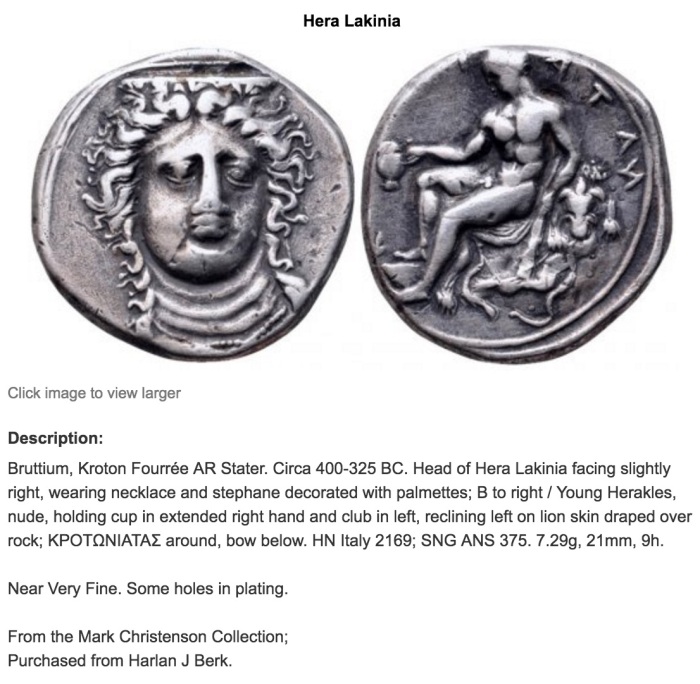
The british auction house Roma Numismatics Ltd. is currently listing this coin…

No further comment is needed here. Even the most novice collector can simply search for “Kroton Hera Lakinia” on the main online numismatic databases, and realize by himself how the genuine types should look.
………………………………………………………………………………………………………………..
EDIT: 27/04/16: After the advice by some collectors to give more solid informations on as to why a coin has been condemned, I posted this comment: “Just enough to look at style, reliefs and details. For example, does anyone have ever seen a thoroat like that on a krotonian coin? Hera Lakinia seems to have a thyroid goiter! That odd die is not listed on any published collection or study. The engravers of ancient Kroton would never have produced something like that. Before condemning it I’ve also check Attianese’s work, which is the most accurate on that mint and the varieties issued. If anyone will ever make me see a match for that die from a specimen listed in reliable collections or studies, I will delete my article on blog.”
Source: https://www.cointalk.com/threads/new-blog-numismaticfakes.277824/
…………………………………………………………………………………………………………………
EDIT, 29/04/16: After the publication of this article and the related discussion on a collectors’ forum, the owner of the auction house, Mr. Rich Beale, has modified the description of the listing, pointing out that the coin is plated, so explaining the oddity of the type, and the holes on surfaces.

Mr Beale also said that the coin “in fact does seem to be ancient, albeit an ancient plated counterfeit. Its lot description has therefore been amended to reflect this fact. The odd appearance seems to be a combination of dies not quite in the right style, and heavy wear that has ‘smudged’ the metal“. Source: https://www.cointalk.com/threads/new-blog-numismaticfakes.277824/
We are grateful to Mr. Beale for having amended his listing by a more accurate examination of the coin, clarifying the oddity of the dies, thus to be intended, from a stylistical point of view, as an ancient unofficial counterfeit “obscenity”, according to the seller not a modern fake.
This story shows how more accurate descriptions on action listings may avoid misunderstandings on the authenticity of a coin.